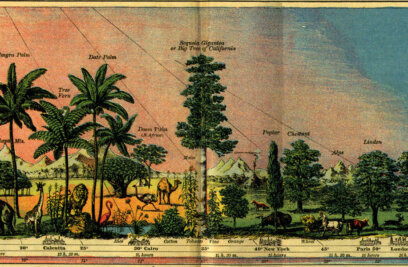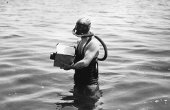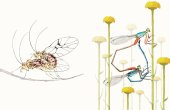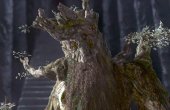The Fascist Dictionary of Nature
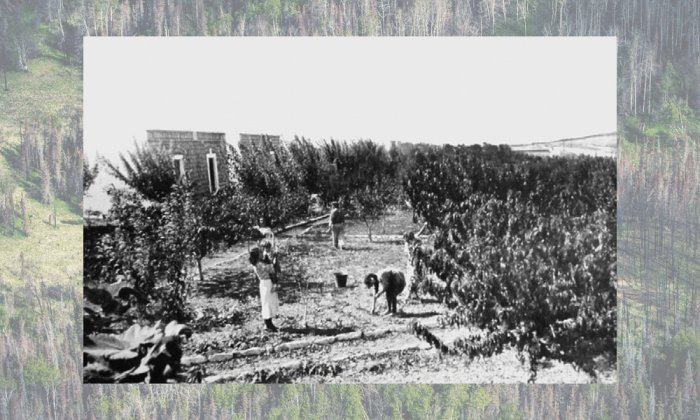
Although not among his most famous speeches, on October 30, 1926, during one of his trips to the region of Emilia, Benito Mussolini outlined what might seem to be a summary of the fascist manifesto on nature:
We have no choice but to create; we of this era and of this generation, because it is up to us to make the face of our country physically and spiritually unrecognizable in ten years. In ten years, comrades-in-arms, Italy will be unrecognizable! We will have transformed it, we will have made another, from the mountains, which we will have covered with their necessary green foliage, to the fields, which we will have completely reclaimed, to the railways, which we will have increased, to the ports, which we will have equipped, because Italy must rediscover its maritime soul. (Great applause).
In this brief passage, from a speech given by Mussolini from the balcony of the Politeama Ariosto theater in Reggio Emilia, it is possible to deduce many of the founding traits of the fascist narrative of nature. It seems clear that Mussolini was not celebrating nature as such, perhaps in some real or imaginary form of wilderness. The nature that the Duce and the fascists love and admire is rather a fascist nature in the historical sense of the word — that is, a nature created by the regime and subjugated to its design. It is fascist forests and fascist fields that Mussolini imagines when he describes the new face of the homeland. It is no coincidence that in that speech, along with forests and fields drained of their swamps, Mussolini mentions railways and ports; the new face of the fascist homeland is made of nature and technology. Trees and railways are both part of an infrastructure to be built rather than protected.
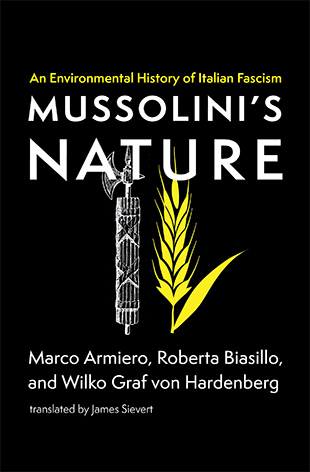
In his mini manifesto on the fascist vision of nature, Mussolini clarified the ambition of the regime to define itself in its specific works through “actual, physical, profound transformations of the face of the homeland.” In short, the regime saw a reflection of itself in the environment, conceived not as something other than itself but rather as its own creation, or a hybrid where nature and politics became one. It is clear that the key word is still reclamation, in the widest possible meaning of the term.
In Ruth Ben-Ghiat’s excellent interpretation, reclamation meant not only draining swamps and fighting malaria but also, or perhaps above all, a demiurgic, almost therapeutic idea of the regime and its ambition to cure the sick body of the homeland. Here it is interesting to note the divergence between the idea of protection in the environmentalist discourse, which presupposes a healthy environment to be preserved, and the fascist notion of improvement, understood above all as a therapy aimed at curing a sick body, or at least improving the performance of a body not yet at its best. Reading Mussolini’s rhetoric on the need to radically transform the face of the country, it seems clear that the fascist treatment was not doing too much good for the health of the Italian environment. In an interview given in 1923, Mussolini said that
a pile of rubble, a shovelful of lime, an expanse of railways, represent to me the revelatory and necessary sign of the progressive elevation of this country of ours, which, once it will have a prosperous agriculture, hard-working industry, safe traffic, exploited mines, and its thousand natural forces well directed and exploited, only then will it have acquired the value of its life and the respect of its destiny.
Here the fascist treatment of nature seems like one of those old-fashioned cures of times past: bitter, violent, and almost always unable to see the body as a whole. The objective appears to be not so much the well-being of the body — in this case, that of the nation — but instead its full and effective exploitation. From this point of view, the metaphor of care and therapy seems misleading because more than a body, the fascist discourse speaks of a machine to be maintained and brought to its maximum performance. Perhaps this is why Mussolini declared that he identified with the work of engineers, who were considered to be the demiurges of the new fascist Italy. The engineers were practical people with their feet on the ground, unlike those who, according to the fascist leader, loved to “walk among the clouds.” The contrast between poets — obviously with a derogatory meaning — and engineers, virile builders of the fascist reality, was a classic rhetorical ploy of the regime, and often the relationship with nature became the discriminating factor in this dichotomy.
Protection, reclamation, and domestication — these words all come from the fascist dictionary of nature.
The other Mussolini, Arnaldo, brother of the Duce and director of the party’s daily newspaper, was perhaps the fascist hierarch who found himself in the most complex situation of maneuvering between the two sensibilities. Arnaldo in fact represented the ruralist soul, attempting to boost the interest of fascism for nature. From 1928 on, Arnaldo led the National Forestry Committee, a sort of forest conservation promotion agency that he had founded, continuing the action started with the creation in 1925 of the periodical Il bosco (The forest). On Arnaldo’s death in 1931 at the age of only 46, the regime made him a sort of tutelary deity of Italian nature and especially the forests. On several occasions, both Arnaldo and his hagiographers felt the need to resolve this alleged contradiction between the love of nature and the concrete spirit of fascism. In one of his most famous speeches, the so-called Asiago speech of 1928, Arnaldo said,
At this point the usual sophists say: you are poets, you love the forests for the sake of the landscape, for your romantic reveries. Let’s go slow here. The landscape has its importance, but we will never subordinate it to the real and true interests of the mountain economy [sic: but the meaning must have been the opposite: we will never subordinate the real and true interests of the mountain economy to its preservation]. No: the truth is different. Fifty percent of our sacred and impervious territory is mountain, which we need to keep populated because the plain is already saturated. Thus, we want roads for mountain people, rich meadows instead of meager pastures, brown alpine breeds instead of destructive goats. Along with all this wealth, we must increase the small and large timber industry, rationalize cutting, protect the springs, conserve the land, and systemize the streams to avoid the silting up of the hydroelectric reservoirs and river beds.
Arnaldo could not have been clearer: Fascism contemplated nature only to the extent that this contemplation did not call into question the interests of the nation.
Yet perhaps even more than this utilitarian vision — by no means exclusive to fascism — it is worth venturing the idea of an aesthetics of nature that links the beautiful with the useful. It is not in spite of economic exploitation that Italian nature is worthy of admiration; on the contrary, it is precisely the combination of hydroelectric basins and forests, rich pastures and orderly streams, that produces a landscape capable of arousing feelings of admiration.
In another passage, Arnaldo reiterated that the Italian landscape was the product of a “rational development” as well as the result of “studies and experience” — a vision that is at odds with any contemplative approach to nature. Celebrated as the face of nature-loving fascism, Arnaldo reveals the basic contradictions in the relationship between the regime and the environment. It is no coincidence that when it came time to sing the praises of the beloved Italian landscape, Arnaldo chose the Po River Valley, one of the most anthropized ecosystems of the peninsula, and picked it precisely because it was so highly shaped by human action. “But above all the works of the earth attract my admiration. In my frequent travels, I always observe, with a spontaneous and profound feeling of pride, the beauties of the Po Valley, its splendid fields laid out and leveled, the trees expertly pruned, the rows of vines stretching out beautifully like a well-choreographed dance.”
The situation was different in the African colonies, where the fascist narrative did not allow for the recognition of any subjectivity in local populations. For this reason, visiting Libya in 1931, albeit amid a myriad of contradictions, Arnaldo took the luxury of contemplating an apparently uncontaminated and wild nature — the complete opposite of the domesticated plains of his homeland. When it came to Italy, however, there were no doubts. The president of the National Forestry Committee, the man who was to inspire fascist policies of nature conservation, clearly seemed to prefer land reclamation to protection, agricultural ecosystems knowingly constructed by generations of farmers to landscapes left to themselves.
In fascist rhetoric more generally, the ruralist discourse is intertwined with the discourse on race.
The corollary of this approach was that the celebration of “nature” was to be accompanied by the celebration of the humans who produced that nature with their work and way of life. In short, it is impossible to understand the fascist discourse on nature without looking at how it relates to ruralism, that peculiar mixture of conservatism and repression strongly situated within a naturalized vision of Italian society. By celebrating the rural world, the fascist regime mixed nature and culture, race and politics. The beautiful landscape was such because it was populated by rural Italians who had domesticated it, built it row after row, field after field, village after village. Within fascism, the Strapaese (supervillage) cultural movement was the most extreme point of ruralism. In a 1927 essay, artist and intellectual Mino Maccari, one of the founders of the Strapaese movement, made it clear that the “original” Italian landscape was comprised of chestnut woods and bell towers, country inns and wild boars. Nature and culture are inextricably linked in Strapaese’s vision; without one, there would be no sense in the other. For Maccari, the forest without the village, like the Po Valley without the rows of vines for Arnaldo, has no place in the fascist discourse of nature.
One could conclude that it is an anthropized nature that fascism is interested in, and this would be correct, of course. The situation becomes more complicated, however, if we consider that in the ruralist discourse, the relationship between nature and humans is more dialectical than it might seem. Certainly humans — perhaps better to say Italians — have shaped nature, producing that landscape so celebrated by Arnaldo. But it is also true that that landscape in turn has an influence on the body and soul of those who inhabit it. We have seen this in Mussolini’s biographies, when reference is made to how much the land of Romagna or the mountains of the Great War had contributed to shaping the Duce’s character. Yet in fascist rhetoric more generally, as historian Silvio Lanaro has pointed out, the ruralist discourse is intertwined with the discourse on race.
In his autobiography, when describing the importance of his childhood and adolescence in Romagna, Mussolini wrote, “This is the land I loved because it was my land. The race and the land have a strong influence on all of us.” Giuseppe Tassinari, an early fascist and an agronomist who held important government positions, observed in 1940, quoting Mussolini, that “land and race are inseparable: through the land the history of the race is made; the race dominates, develops, and makes fertile the land.” Historians such as David Blackbourn and Thomas Lekan have recounted how in Nazism, there were similar discourses about German racial energy and the natural landscape.
If the body was “naturally” the point of engagement between the ruralist and racial discourse — a socioecological metabolism that produced healthy bodies and environments together — more specifically it was the notion of fecundity that best embodied this incorporation of nature and race into the fascist body. Strapaese emphasized the sexual exuberance of the authentic fascist male and fertility of the rural woman. Mussolini himself was the prototypical Latin lover because however much his wife tried to portray him in his biography as a quiet husband interested only in family and the vegetable garden, his countless extramarital affairs clashed with that image. In his official speeches, Mussolini reiterated the link between rurality, race, and fertility, although not with the hyperbole found in the Strapaese journal Selvaggio (Wild). The rediscovered fertility of the motherland — rediscovered thanks to the work of the regime — was mirrored in the fertility of the most authentic Italic stock, that of rural Italy, which was genuine as well as pure in the racial sense of the term because it was not contaminated by encounters with other ethnic groups.
Ruralism was therefore articulated in opposition to urbanism: It was the revenge of the countryside over the city. In his introduction to the 1928 Italian edition of a book on declining birth rates by Richard Korherr — who in the subsequent years would become an important official in Nazi Germany’s statistical bureau — Mussolini made explicit this dichotomy between city and country, describing in dark tones urban sterility as opposed to rural fertility:
The desert is made in the fields; but when the desert extends its abandoned and burnt plains, the metropolis is caught by the throat: neither its commerce, nor its industries, nor its oceans of stones and reinforced concrete, can restore the equilibrium now irreparably broken: catastrophe ensues.
The language used by Mussolini refers directly to natural metaphors, such as the desertification of the city and sterility of its urban ecosystems. Sterile environments and infertile bodies are the characteristics of cities, in a metabolic cycle that binds together ecosystems and humans. The cities reproduce urban culture and ways of life, but they don’t reproduce the Italic lineage in the version perfected by fascism. Opening the session of the National Council of the National Fascist Party in August 1924, Mussolini praised the “old, solid, and square” Italian provinces in contrast to the “wimpy” cities, which were the receptacle of the “remnants” of the old liberal world.
The link between ruralist discourse, empire, and race remains a leitmotif of fascist discourse.
The ruralist policy of the regime thus included the reclamation of land and race, an expansive demographic plan, and a repressive and conservative agenda with an antiurban tone. The backdrop to this was a colonialist vision, with an army of peasants ready to take possession of African lands. All of this was immersed in a racist narrative that in a confused and yet violent way connected imperial pasts, natural ecologies, and a fascist idea of lineage. In his well-known Ascension Day speech of 1927, Mussolini openly contrasted the healthy and fecund rural areas of the country with urban areas, which were harbingers of infertility and moral decadence. And in case the fascist link between ruralism and empire was not sufficiently clear, Mussolini added, “If you decrease in population, gentlemen, you don’t build an empire, you become a colony!” The link between ruralist discourse, empire, and race remains a leitmotif of fascist discourse.
Imperial wars and wars of reclamation converge to construct a fascist nature and race. The metaphor of war, also used to describe the policies of transformation of the territory, clearly reveals the basis of the fascist vision of nature. Struggle rather than contemplation seems to be the key to this virile relationship with a space that, if not hostile, is certainly a place of hard work where the other nature, that of bodies and race, can be shaped.
Marco Armiero is ICREA Research Professor at the Institut d’Història de la Ciència (IHC), Universitat Autonoma de Barcelona, Spain. Since 2019 he is the elected president of the European Society for Environmental History. In Italy he holds a position of director of research at the CNR Institute for Studies on the Mediterranean.
Roberta Biasillo is Assistant Professor of Contemporary Political History at Utrecht University.
Wilko Graf von Hardenberg is Research Scholar and PI of the project “The Sound of Nature: Soundscapes and Environmental Awareness, 1750–1950” at Humboldt University in Berlin.
Armiero, Biasillo, and von Hardenberg are the authors of “Mussolini’s Nature,” from which this article is excerpted.
